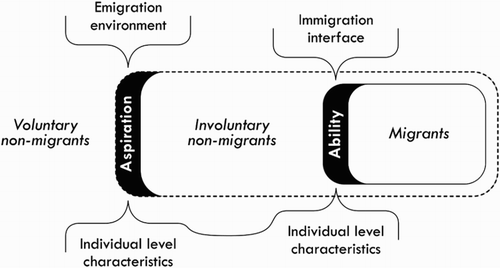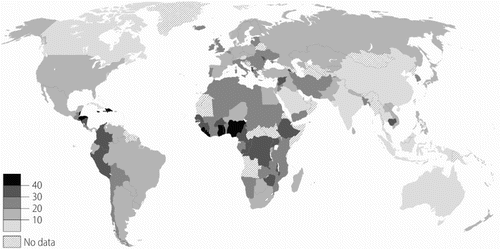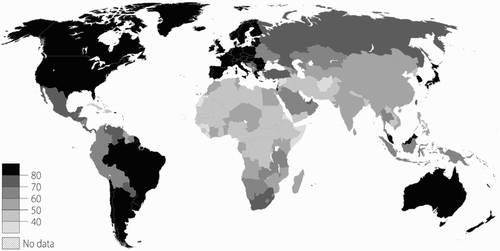Figures & data
Figure 1. The aspiration/ability model. Reproduced from Carling (Citation2002).

Table 1. A typology of survey questions on migration aspirations and related concepts.
Figure 2. Migration aspirations illustrated by the proportion of GWP respondents who would prefer to move permanently to another country. Based on data reported in OECD (Citation2015) for the period 2007–2013. For exact question, see .

Table 2. Comparative display of survey results about migration aspirations.
Figure 3. Migration ability illustrated through a travel freedom index. The index estimates the percentage of countries to which a citizen of each country would be able to travel. It is based on the assumption that half of the countries where a visa is required (Henley & Partners Citation2015) can be accessed with a likelihood equal to the average nationality-specific acceptance rate for visa applications to the Schengen Area (European Commission Citation2016) and the United States (US Department of State Citation2016), while the other half remains inaccessible. The rationale for the latter point is that the greatest barriers are often posed by the requirements for launching a complete application in the first place.

